If at first you don't succeed, make another loaf of banana bread.

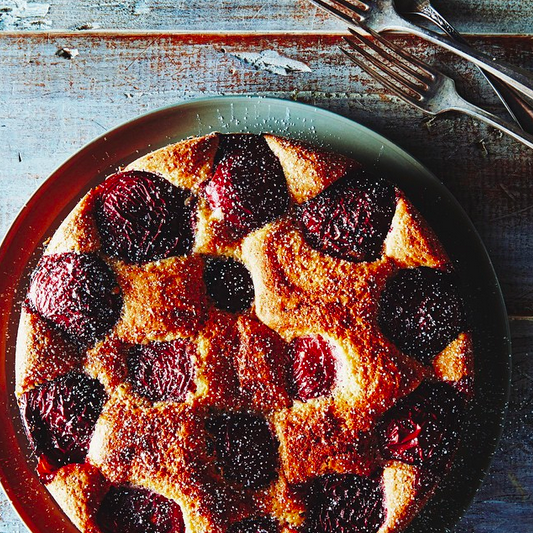
When you're lucky enough to work on a cookbook with 60 trusted recipes from all-star contributors, a team of kitchen wizards (Allison, Derek, Anna, Erin, Lisa, and Jennifer, I'm looking at you!), and a magical photographer—and that cookbook is about cookies, cakes, and pies—it's almost guaranteed that things will be beautiful and taste great.
But no road—not even one paved with chocolate chips and marshmallows—is without potholes and speed bumps. There was the search for ripe stone fruit in January (thanks, Manhattan Fruit Exchange!); the time when the sour cream-whipped cream topping for the skillet spice cake didn't quite make it into the photograph; the case of the spreading cornmeal cookies; and many evenings spent cradling my sugar-coated stomach.
But we prevailed! Consider our failures the guarantors of your future success. We tasted and tested, we scratched our heads and sob-laughed, so that these recipes would work for you.
Plus, for your entertainment, we narrowed down the harrowing moments to the top 5 (and 1/2) best-worst snafus:
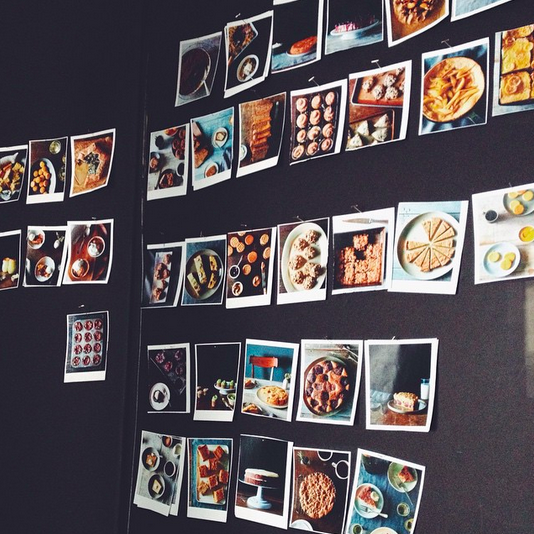

1) The domed dump-it cake.
If I could pick one frosted chocolate cake to represent Food52, it would be Amanda Hesser's Chocolate Dump-It Cake. It's a dessert institution. The photo on our site (below, right) is famous for its perfectly smooth, blemish-free frosting (it might even be featured in an upcoming skincare commercial!)—a testament to Amanda's (and her mother's) diligence and skill.
But when we made it in the test kitchen, we weren't quite sure which way was right side up. Should the cake be domed, or should we place the curved layer directly onto the platter? You can see the choice we made (below, left).
Sensing that something wasn't quite right, we emailed Amanda, who clarified that the cake does need to be flipped and—even better—offered to frost it herself. For the final book photo, we put Amanda to work in the kitchen. You'll have to get Baking to see for the photo yourself, but I will say that the cake looks even more lush in the book than it does on the site.
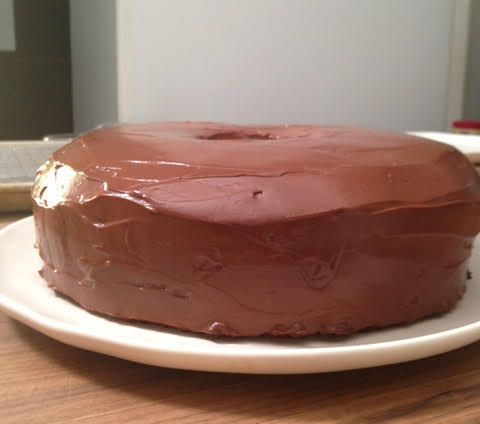
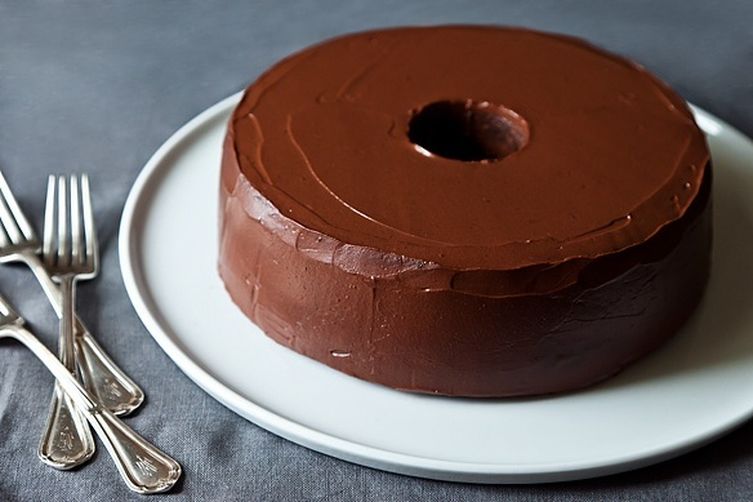
Our rotund cake versus Amanda's perfectly flat one.
1 1/2) The mini lighting fail.

An unfortunate lighting and filtering situation made the right-hand portion of this baked French toast appear blueish-greenish on our photographer James's Instagram photo. While a casual 905 people liked James's photo, the comments were gold: "Looks like mold on the right side..." and "@food52 what is that green stuff."
We promise it wasn't actually green. Kenzi's alternate photo proves that our breakfast was 100% bacteria-free:
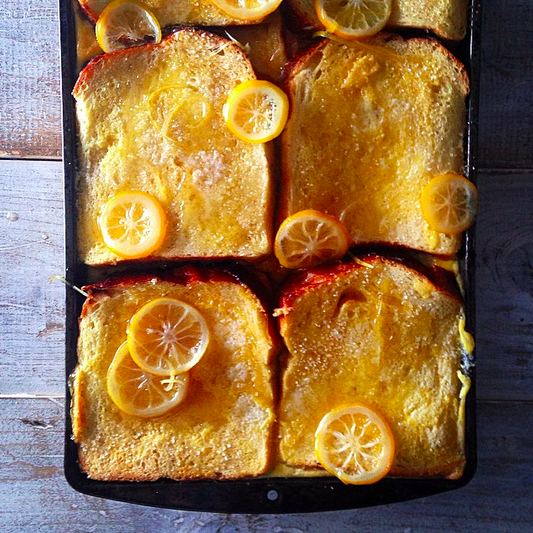
2) The not-quite-right cream cheese cookies.
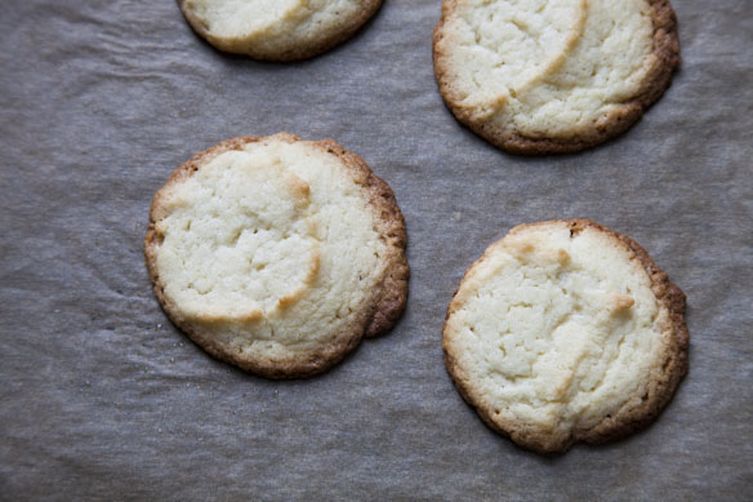 The original photograph of the cookies.
The original photograph of the cookies.
I was initially concerned about the first book photo of the cream cheese cookies (below, left) because they didn't seem as brown and burnished as the originals (above). So I emailed Merrill (the recipe comes from her mother, who learned about them at a 1970s Tupperware party).
Merrill, who grew up with these cookies, introduced an issue I hadn't even considered: "It's not just that they should be more brown around the edges (a little browning on the top is okay if it happens, but certainly not required), but also that the texture of these cookies looks a little off (sort of lumpy)."
Though I followed the recipe to a tee, I had baked them in my apartment's crotchety, unreliable oven—could that have been the issue? When we made the cookies in the test kitchen, however, we noticed the same problem. Was the batter too warm? Had we over- or under-baked?
After many more trials and a whole lot of cream cheese, we found the problem: the fat content of the butter. In order for these cookies to get their characteristic texture, you have to use butter with a high moisture content and low fat content. You know, the kind they were using at 1970s Tupperware parties. In the book, we recommend Land O'Lakes.
P.S.A.: If you use high-quality butter, these cookies will still taste really good. They just won't look as nice.
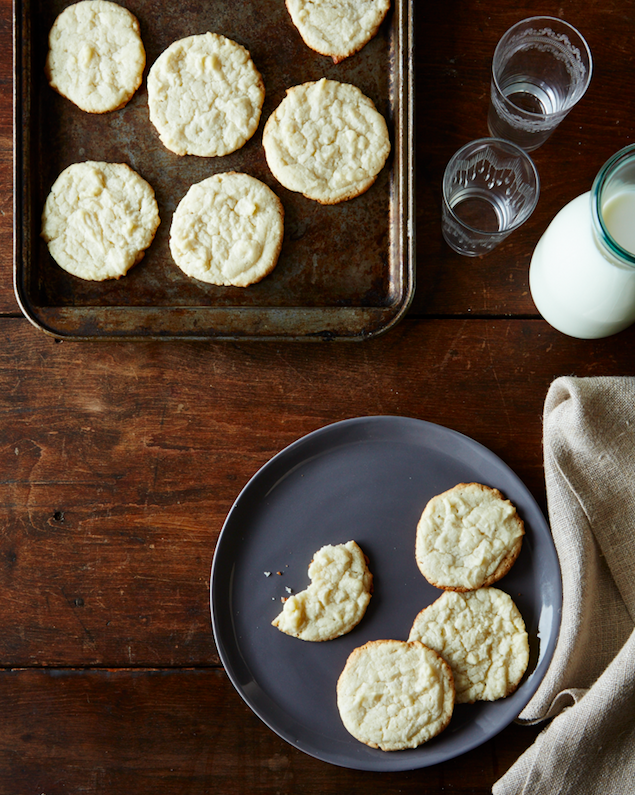
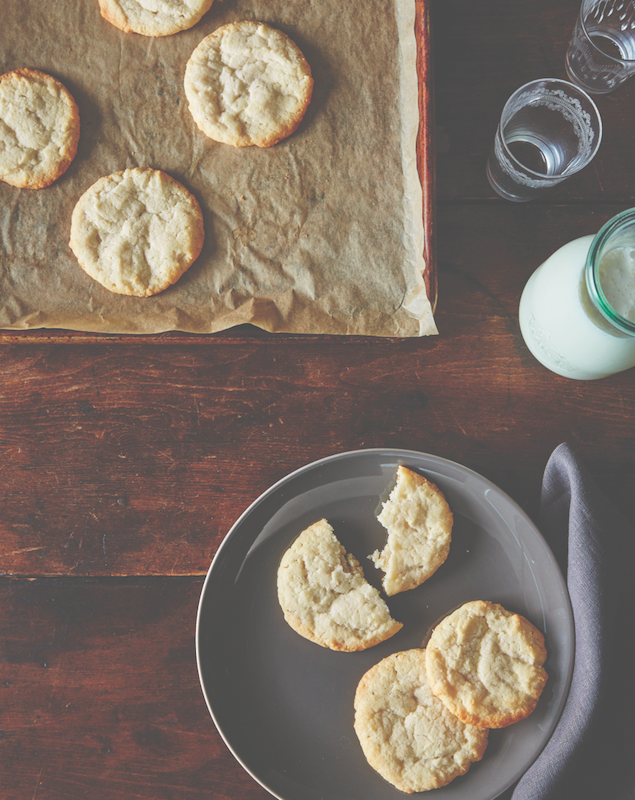 Notice the color and texture differences in the first photo of the cookies (left) and the final photo (right).
Notice the color and texture differences in the first photo of the cookies (left) and the final photo (right).
3) Late night, early morning banana bread.
The first time we shot Bestest Banana Bread (a recipe from Brette Warshaw and her mom, Sheri), the loaf turned out perfectly. It dipped gracefully in the middle, as Brette said it would ("It's delicious a tad underbaked"). And for its moment in the spotlight, Kristen arranged the slices in a congo line (then took a selfie); see below.
But when we wanted to try getting a cover shot with the bread, we had trouble replicating it. Here's a play by play of what happened next:
Friday, 5 P.M. Learned that I would need to make the banana bread for tomorrow's early-morning shoot.
7 P.M. Stay at the office late to bake banana bread. Forget to add sugar until the very last minute. Hit palm to face.
8 P.M. Take loaf out of the oven and it looks fine.
8:30 P.M. Entire center of cake has sunken. No way we can shoot it.
11:30 P.M. Stop at the grocery store on the way home from a dinner for my birthday to pick up the most gnarly-looking bananas around.
Saturday 12:30 A.M. Second loaf of banana bread in the oven, looking okay.
1:30 A.M. Loaf is out of the oven, cooling on the counter.
4:30 A.M. Wake-up call. Go check on loaf. Completely sunken in the center. Hit palm to face.
5:30 A.M. Arrive at office to receive groceries from Fresh Direct, depressed cake in hand.
7 A.M. Erin arrives and makes another banana bread, using more flour to compensate for any sinking.
8:30 A.M. Erin's cake is beautiful but domed. Looks lovely but does not match the photo in the book's interior.
11 A.M. Realize we do not have the right surface for the bread. Run to Prop Workshop to try to find the surface we used for the first photo.
11:45 P.M. Even with the right surface, we decide the shot is hopeless.
12 P.M. Resolve to never eat banana bread again.
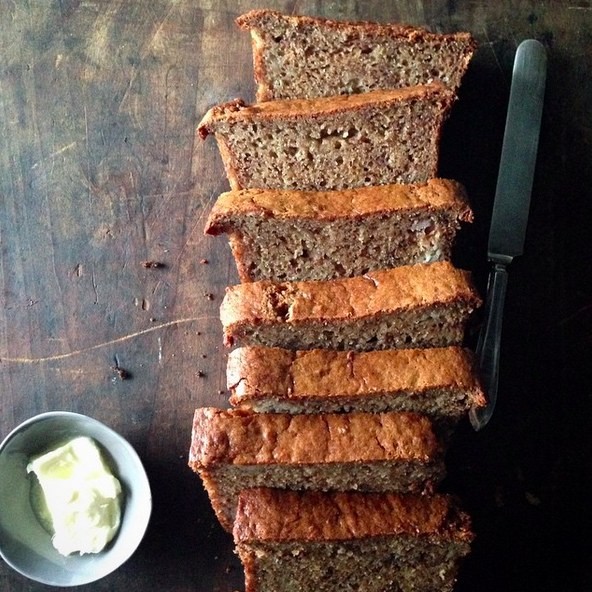
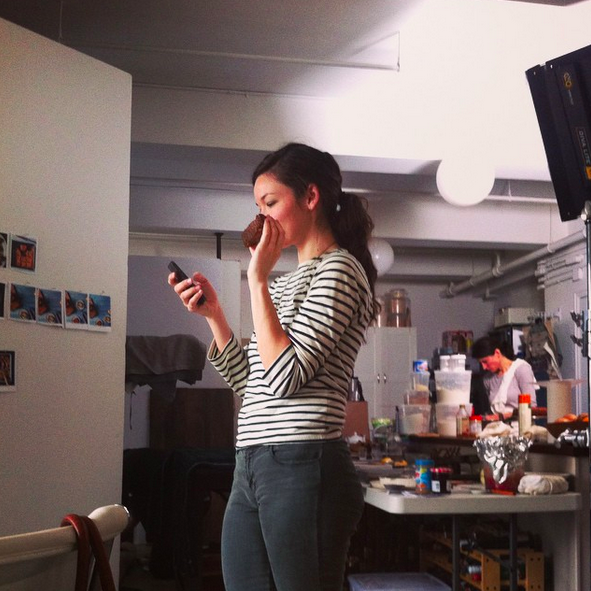 Dancing banana bread (left) and selfies with banana bread (right).
Dancing banana bread (left) and selfies with banana bread (right).
4) Almond butter pavlova, 500 times.
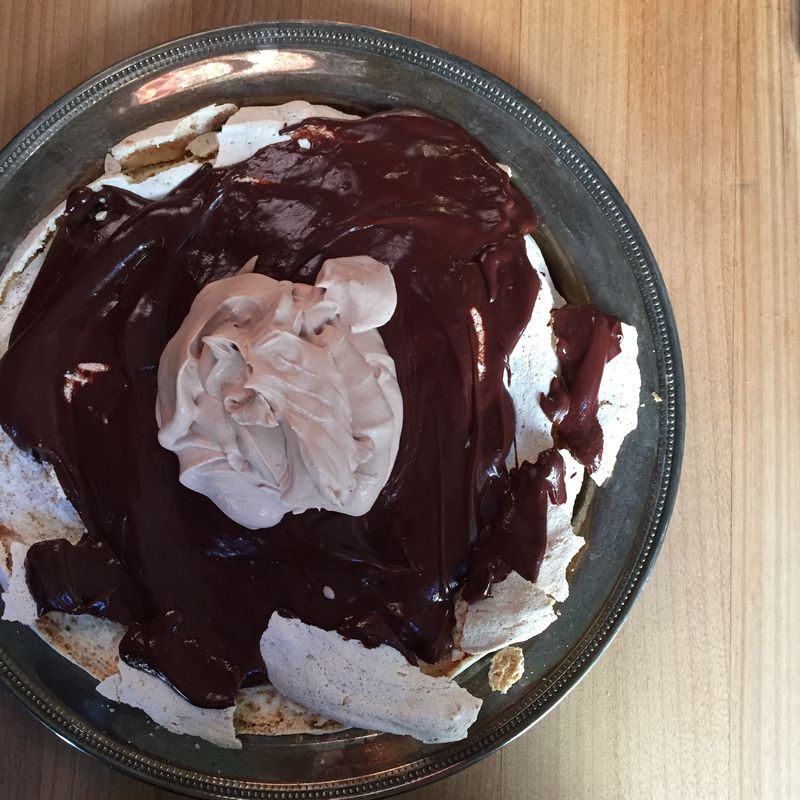
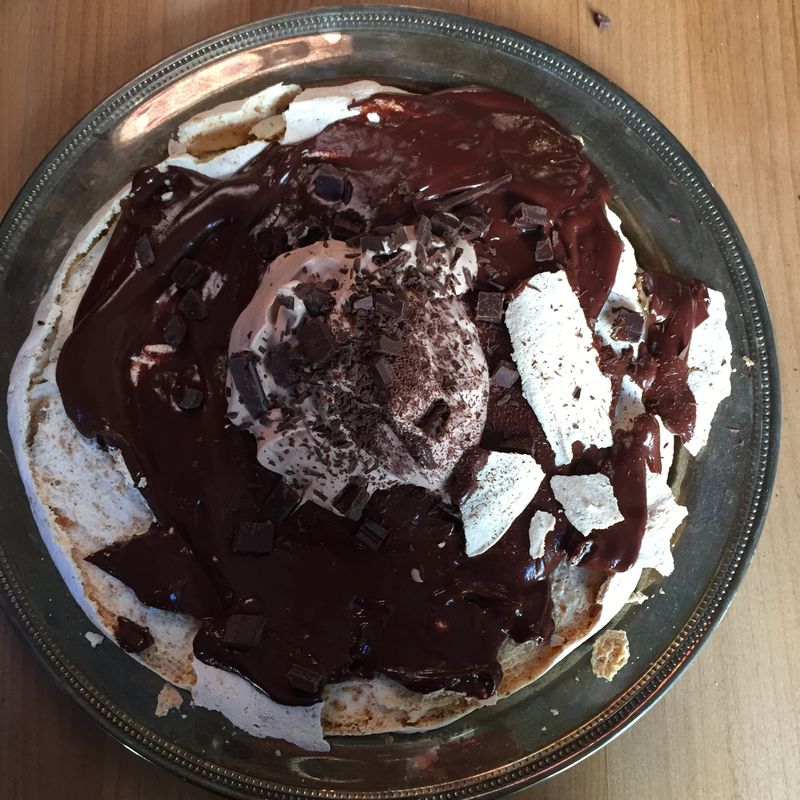
Not even chocolate shavings could save this pavlova.
More than the cake, the cookies, or the quick bread, this almond butter pavlova—which we tried to adapt from this peanut butter pavlova—was our white whale. Almost every person who worked on the book took a turn making it—and, hauntingly, no one succeeded. We varied what type of almond butter we used, the amount of cornstarch, the amount of cream of tartar, the baking time, and the baking temperature, but to no avail. We even consulted Alice Medrich and got Stephanie, our head recipe tester, on the case.
After too many sunken, hollow, moist, and/or horribly ugly (see above) pavlovas, we gave up and replaced the recipe with Erin's Tender Yellow Cake with Bittersweet Chocolate Frosting. As for the pavlova? Alice eventually perfected the recipe.
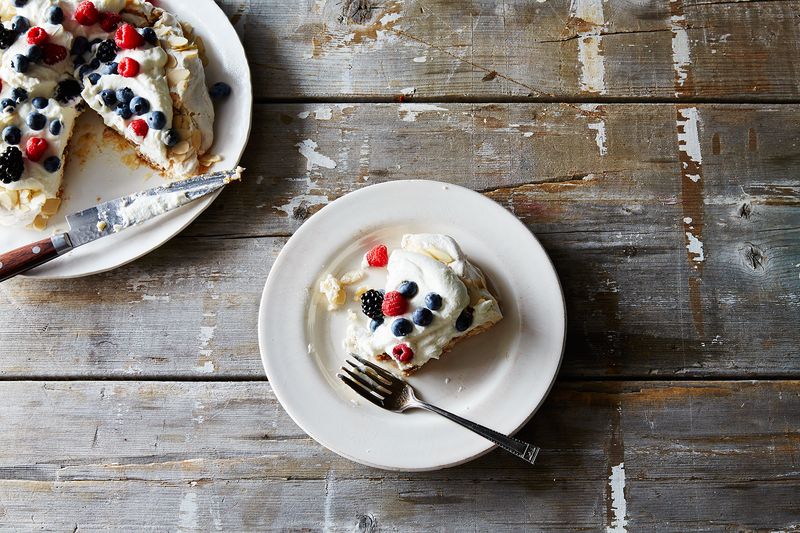
No surprise here: Alice Medrich eventually perfected the recipe.
5) Double-layer coconut pecan bars, 500 times.
By now, you all know that ChefJune's brownies are our Baking cover girl. But before the glory of those fudgy brownies, there were the gooey double-layer coconut pecan bars, a recipe from my grandma. Over the course of the book, I made the recipe no fewer than 4 times as we tried to find the right pan, the right surface, and the right way to cut the bars to make them look the most cover-worthy.
It would not surprise me if, between all the squares and slivers I cut for myself between shots, I ate an entire pan's worth.
Now when I go to my grandma's house, I skip past the pecan bars and head straight to the marshallow brownies (ask me for that recipe if you're interested).
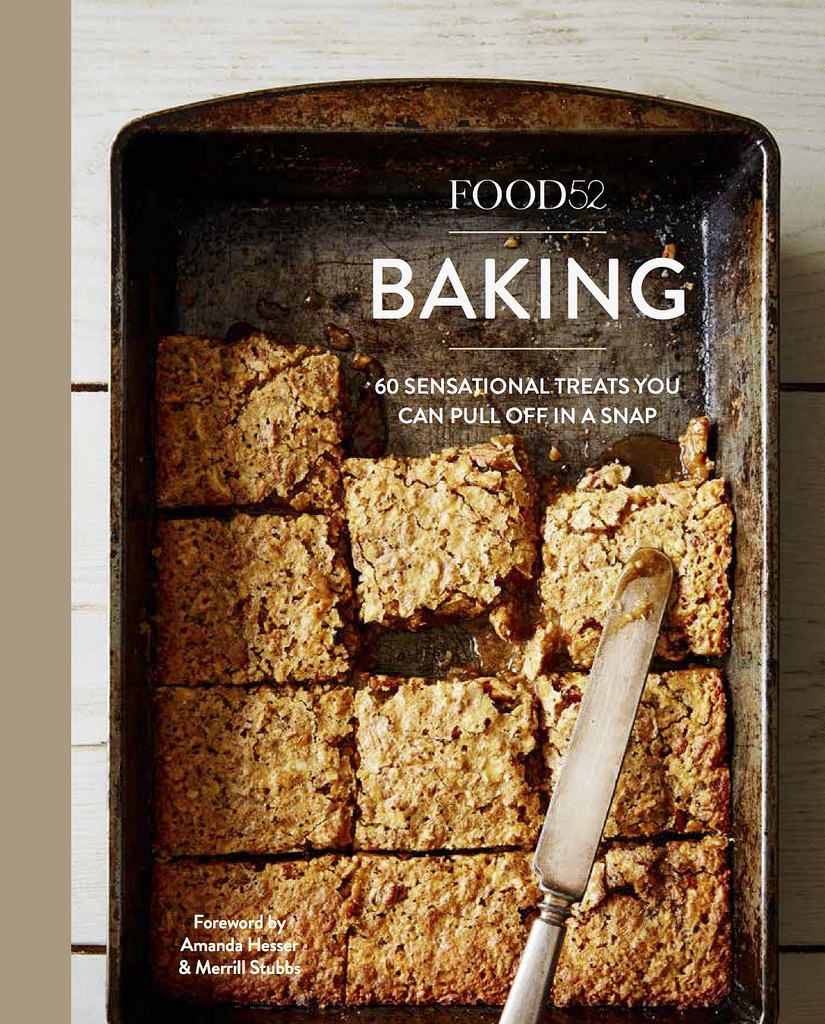
A rejected cover try with the pecan bars.
Photos by James Ransom, Kristen Miglore, Marian Bull, Kenzi Wilbur, and author










 Notice the color and texture differences in the first photo of the cookies (left) and the final photo (right).
Notice the color and texture differences in the first photo of the cookies (left) and the final photo (right).







See what other Food52 readers are saying.